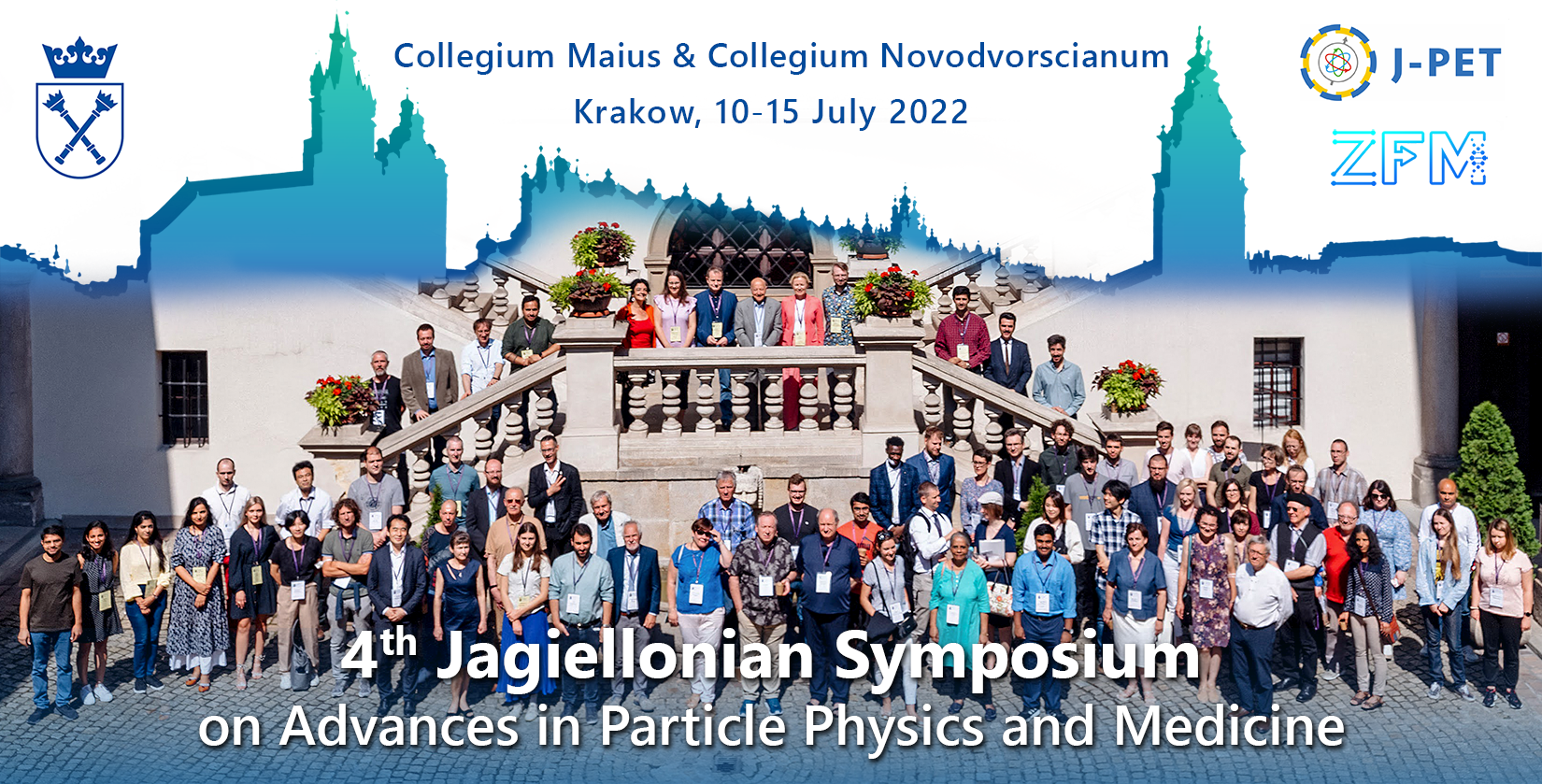Speaker
Description
We modify the positronium imaging method for the Jagiellonian PET (J-PET) scanners, using the simulated data for the decays of a metastable ortho-positronium (o-Ps) based on the pick-off and conversion processes resulting in two 511-keV annihilation photons [1, 2]. An analytical model, embedded into the time-of-flight maximum likelihood expectation maximisation (TOF MLEM) reconstruction algorithm, is introduced for the assessment of the multiphoton detector response and the estimation of the o-Ps mean lifetime.
The detection probabilities of the J-PET system matrix are calculated for the coincident events each constituted by two annihilation and one deexcitation photons. TOF information is used for the iterative MLEM run and the estimation of a time difference between the annihilation and the positron emission, the distribution of which is built for each voxel. The latter is updated in event-by-event way using the weights for the ultimate MLEM iteration.
Employing the Geant4 software [3], we simulated the experiments with four point-like sources put into two existing J-PET prototypes, each corresponding to a tissue of a different o-Ps lifetime, with total activity 1.1 MBq for the injected 22Na [2, 4]. The decay model was restricted to include only the decays into back-to-back photons, implying the exponentially modified Gaussian shape for the aforementioned time difference histograms.
Utilising TOF MLEM allowed to reduce the noise and significantly improve the spatial resolution of the positronium imaging, compared to the earlier studies [1, 2]. The o-Ps mean lifetimes, calculated as a result of fitting the histograms exhibited a good consistency with the simulation setup. The reconstruction algorithm uses the advanced resolution model that accounts for both the geometrical factors and the detector blur of the J-PET, and can as well be extended to include attenuation correction or other contributions, as well as for the o-Ps decay into three photons.
[1] P. Moskal et al. “Performance assessment of the 2γ positronium imaging with the total-body PET scanners,” EJNMMI Phys., vol. 7, no. 44, pp. 1, Jun. 2020.
[2] P. Moskal et al., “Positronium imaging with the novel multiphoton PET scanner,” Sci. Adv., vol. 7, no. 42, pp. 1, Oct. 2021.
[3] S. Agostinelli et al., “Geant4 – A Simulation Toolkit,” Nucl. Instrum. Meth. A, vol. 506, no. 1, pp. 250, Jul. 2003.
[4] P. Moskal et al., “Simulating NEMA characteristics of the modular total-body J-PET scanner – an economic total-body PET from plastic scintillators,” Phys. Med. Biol., vol. 66, no. 17, pp. 175015, Sep. 2021.

